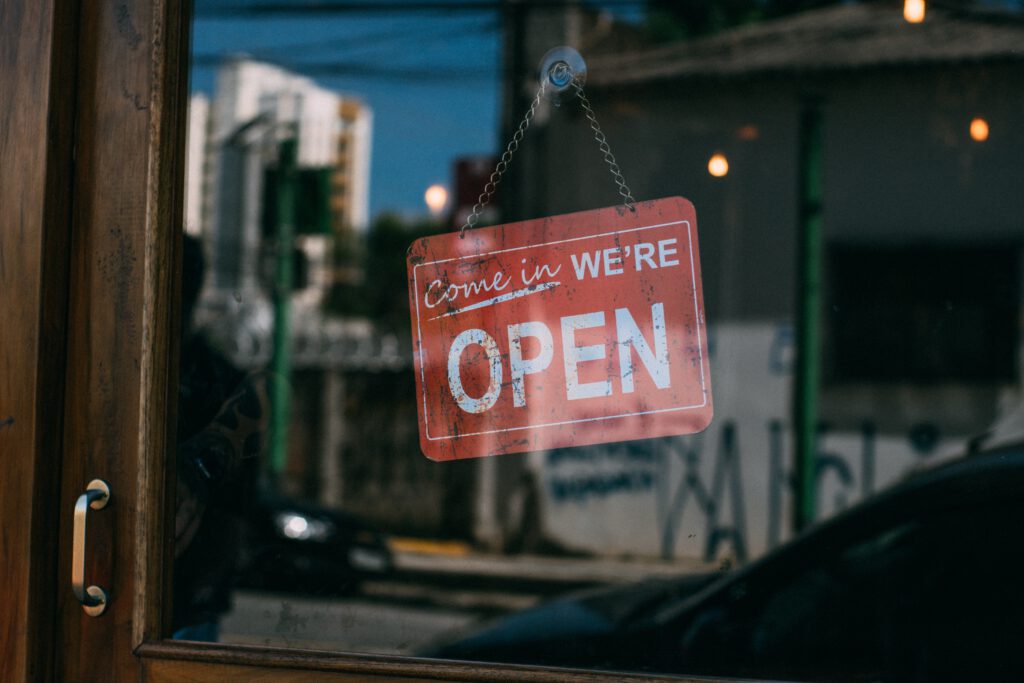Can our parents now enjoy some safe retail therapy on the High Street?

With lockdown easing, and people being positively encouraged to get back onto the High Street to save ailing businesses, our older family and friends may be tempted back out if they’re not actively shielding.
However, older people, especially if they live with a number of health issues, remain at risk of reacting badly if they do catch the coronavirus. The evidence suggests we still need to protect them.
So how can we help them be safe in the shops?
Masks or not?
There’s a difference between masks and face coverings. The public are being asked to use face coverings on public transport and while visiting hospitals. However, using a face covering while out shopping may become a requirement, and if enough people join in, a community effort could help prevent the spread of the virus.
So if your parent will entertain the idea, face coverings are a good idea for a few hours of retail therapy. It doesn’t have to be a bought mask, which are currently still in short supply.
You could use a scarf or even convert a sock into a covering for nose and mouth. And if they don’t get on with that, there are plenty of patterns online for making cheap and cheerful coverings from a piece of fabric and bindings or elastic.
Finding a new way around
As shops open they are doing their best to adhere to guidelines about social spacing, it could be confusing initially if your parent is venturing out for the first time in months. The better organised shops will have staff to help customers. But it’s not going to be easy for the shops and their staff. Waterstones, for example, has said it will quarantine any book browsed for 72 hours before putting it back on the shelf, and fitting rooms remain shut in clothes shops. Cafes won’t be open yet, so it really is a case of shop and go.
When it comes to payment, times have certainly changed. Many shops are currently loathe to take cash at all, so contactless and card payment is the order of the day. HuffPost has a few tips on making payments as risk-free as possible, including:
- Bring your own wipes and sanitiser, just in case there’s none supplied in the shops
- Avoid physically tapping a contactless card on a payment device. Just holding it an inch or so above will do the trick
- Use house keys or something similar to punch in numbers if you need to
- Sanitise after making a payment, before leaving the shop
- Take any cash in an envelope, so you can put it aside for a few days when you get home
Making use of facilities
Even before the virus hit, it was becoming a problem to find toilets available for shoppers. Councils have been closing facilities everywhere to save money and sell off the land. Where our public conveniences were in my local town, there’s now a block with three shops and six flats.
At the moment, this is an even bigger issue. Pubs and coffee shops may have provided some respite in normal times, but they are closed for everything bar takeaway.
Larger shops may have toilets, but they have to work out a way to make facilities available in a social distancing world, and that is itself likely to involve one in, one out and social distancing queuing.
Thankfully, in a letter to local authorities at the end of June, the UK goverment asked that public toilets that had been closed should be opened. However, councils need to find a way to apply social distancing and hygiene guidance in areas that are not really designed for the one in/one out way of working.
What about the shielders?
A good question.
Around 2.5 million people across the UK received letters in late March 202, telling them to stay at home because they were most at-risk from a serious reaction to Covid-19. Many have been receiving emergency packages of essential items, as well as community support.
Now this advice is due to expire in England and Northern Ireland on 30 June; in Scotland on 31 July, and in Wales on 16 August. At the time of writing the UK government is promising further advice, but we don’t know what shape that will be.
So while much of the UK’s population is coming back out and allowed to indulge in some retail therapy, there’s as yet no guidance as to what those designated as shielding will be able to do. With the four nations now making slightly different rulings about who can do what, when, it’s become an even more unclear situation.
Shopping – yes or no?
The mental health argument suggests that people need to get out of their homes, but they need to do so safely.
The fact that public transport and the shops themselves have strict guidelines on how to manage their customers will help enormously. At the same time, much of the effort depends on how willing other shoppers are to follow the rules and help protect the people around them.
And we need to continue to bear in mind that the pandemic is not over. There may be a second wave. We may already have effective treatments available. But with older people statistically more at risk, we need to help them stay as safe as possible.
Photo by Kaique Rocha from Pexels
Read our other articles helping you to support your older family and friends during the coronavirus crisis

